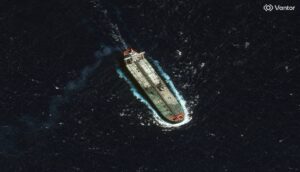
Published 09/25/2023 16:56 | Edited 09/27/2023 12:33
At this point, not even Francis Fukuyama should believe in his thesis according to which, with the end of the Soviet Union and the Cold War, we would have reached the “end of History”, supposedly represented by the definitive victory of capitalism and bourgeois liberal democracy.
In the neoconservative vision of the American philosopher, there was no longer room for major wars – but only for local and smaller conflicts. However, almost 34 years after Fukuyama’s triumphalist and hasty article – which would give rise to the book The End of History and the Last Man –, the world insists on denying the man and his work.
According to a survey by the Conflict Data Program at Uppsala University (UCDP), in Sweden, in partnership with the UN (United Nations), we are experiencing the most warlike period on the Planet since the end of the Cold War. The list includes both wars between States and non-State conflicts (between armed groups and terrorists, for example).
In 2022, the world had 55 conflicts in 38 countries. Eight of these conflicts resulted in more than a thousand deaths during the year and, therefore, can be considered wars. The scenes of slaughter are Burkina Faso, Ethiopia, Yemen, Mali, Myanmar, Nigeria, Somalia and Ukraine.
Based on the criterion of a thousand deaths/year, the list does not include Syria (which had a smaller number of losses last year), but will include Sudan (which has already surpassed a thousand deaths in 2023). All estimates, it is worth mentioning, are conservative estimates, as the precise number of deaths in conflict is difficult to pinpoint.
Wars and conflicts also leave a trail of humanitarian crises, which involve increased poverty, hunger, exclusion and emigration. According to the agency UNHCR (United Nations High Commissioner for Refugees), at least 108.4 million people left their country of origin due to conflict pressures.
The crises of capitalism are behind the recent wave of conflicts, assesses Magnus Öberg, professor at the Department of Peace and Conflict Research at Uppsala University and director of the Conflict Data Program. “There are a number of global changes that contribute to this increase in tensions – and a main one is the economic crisis of 2008. We always see an increase in the number of conflicts in the years following an economic crisis,” Öberg told Estadão.
His report shows that the end of the Cold War was not enough to seal final predictions. The world is in the grip of war, according to him, due to “the worsening of the global economy and economic recessions”, which “tend to drive conflicts”. With the Covid-19 pandemic, the crisis worsened. “The recent problems we have had, the pandemic, the rise in inflation, the worsening economy – all of this creates a tendency for violence to increase in the following years.” History is alive – and in dispute!
Source: vermelho.org.br

